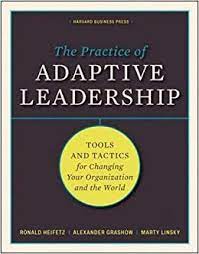Law Enforcement Leadership Training Series
Adaptive leadershipadaptive Leadership
How We Help Create Adaptive Leaders
Dr. Ronald Heifetz and Marty Linsky introduced the adaptive leadership model at Harvard University. Like many other business leaders, they realized that the single-figure, top-down leadership model is outdated and impractical. No single person can solve all of a company’s problems, which brings in the need for adaptive leadership.
Equipping a team of leaders to work together with employees is essential for a business’s survival. The adaptive leadership model goes against traditional problem-solving methods. In this model, there are two types of problems: technical and adaptive. Technical issues rely on protocol, procedures, rules and regulations to solve them. Adaptive challenges, on the other hand, depend on dynamic, people-focused solutions. What’s more: creative solutions strengthen the organization and ensure its long-term success.
Ronald Heifetz 5 Adaptive Leadership Principles
These are the five core adaptive leadership principles:
Emotional Intelligence
Emotional intelligence is the ability to perceive other’s feelings as well as your own. Adaptive leaders can control their own emotions and handle relationships empathetically. Empathy allows leaders to respond to adaptive challenges because they see the ‘people’ behind the issue.
Organizational Justice
People in positions of leadership need to be honest and open. Organizational justice refers to how employees perceive fairness in the workplace. If adaptive leaders present all the facts, changes are more readily accepted and understood by stakeholders and employees.
Development
A key component in adaptive leadership is to embrace learning and continuous growth. Leaders shouldn’t be afraid to try new tactics to solve problems. They should also encourage innovation and creativity from their employees, even if the solutions don’t always work.
Character
Adaptive leaders should be willing to switch course when something isn’t working. Being open to feedback is essential to the adaptive leadership framework. Adaptive leaders also embrace diversity and accept everyone’s unique perspective on how to solve challenges.
Win-Win Problem Solving
Instead of the classic divide and conquer approach, think about how both sides can benefit. External stakeholders and members of the organization will gain more by working together. For example, an organization might benefit more from a merger with a competitor than continuing to expend resources while trying to beat the competition.
Adaptive Leadership FAQs
Why is adaptive leadership important?
Heifetz adaptive leadership is essential for an organization to solve problems in a fast-paced world. Disruptive technologies, new trends and fierce competitors are emerging every day. Companies that have the framework to solve these challenges creatively will be able to scale and grow. On the other hand, companies that stick to the “command and control” approach will struggle to succeed.
What is an adaptive challenge?
Adaptive challenges differ from clear-cut technical challenges. Procedures, rules or regulations can’t solve them. Instead, they are usually systemic issues that require a shift in values or beliefs. Thus, the problem has to be analyzed by adaptive leaders to find the appropriate response. Working together is the key to solving an adaptive challenge, similar to the solution we provide with Experience to Lead’s Apollo Leadership Experience.
What are adaptive skills?
Adaptive skills include the ability to anticipate future challenges, share those challenges with the team and develop collective solutions. These skills rest on the understanding that solutions are non-traditional and innovative. Openness to feedback and constructive criticism is also an essential adaptive skill.
How does the adaptive leadership approach differ?
The adaptive leadership approach doesn’t rely on one individual alone to solve problems. Instead, this model enables a group of people to find practical solutions. It embraces critical thinking among all members of an organization and teaches them to adapt. Instead of sticking to the old methods that worked in the past, it encourages innovation.
Conclusion
The adaptive leadership theory expanded by Heifetz essentially states that adaptive challenges require adaptive leadership. Adaptive leaders are open-minded, willing to self-correct and empathetic towards their employees.
In an organization with adaptive leadership characteristics, every person’s opinions are valued. Each team member is seen to have the ability to solve an unknown problem. When external factors such as a crisis disrupt an organization, adaptive leadership is needed to find creative solutions. These solutions focus on win-win outcomes and differ from traditional approaches.
Details
Taking Adaptive Leadership to the Next Level
Challenge
Adaptive challenges differ from clear-cut technical challenges. Procedures, rules or regulations can’t solve them. Instead, they are usually systemic issues that require a shift in values or beliefs. Thus, the problem has to be analyzed by adaptive leaders to find the appropriate response
Solution
The adaptive leadership approach doesn’t rely on one individual alone to solve problems. Instead, this model enables a group of people to find practical solutions. It embraces critical thinking among all members of an organization and teaches them to adapt. Instead of sticking to the old methods that worked in the past, it encourages innovation.
Get In Touch
San Diego, CA
+1 760-476-1588
dan@lelti.org
